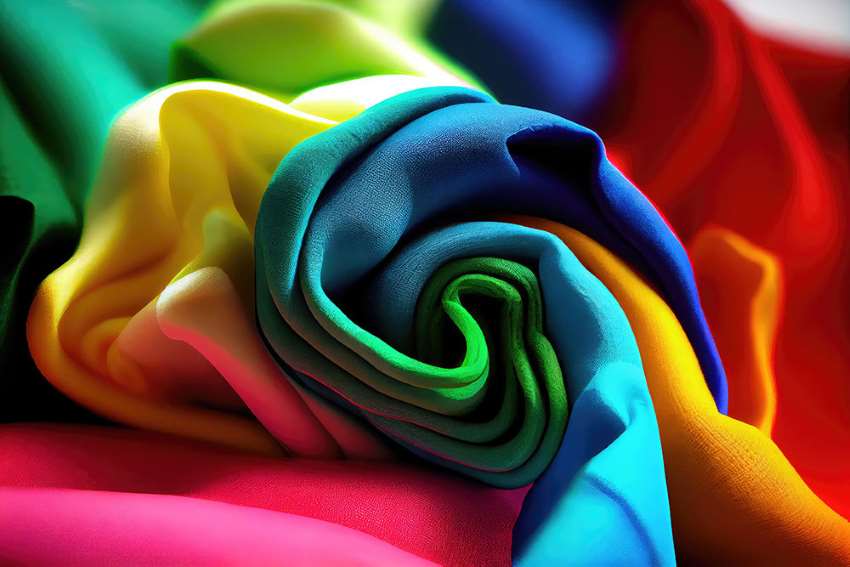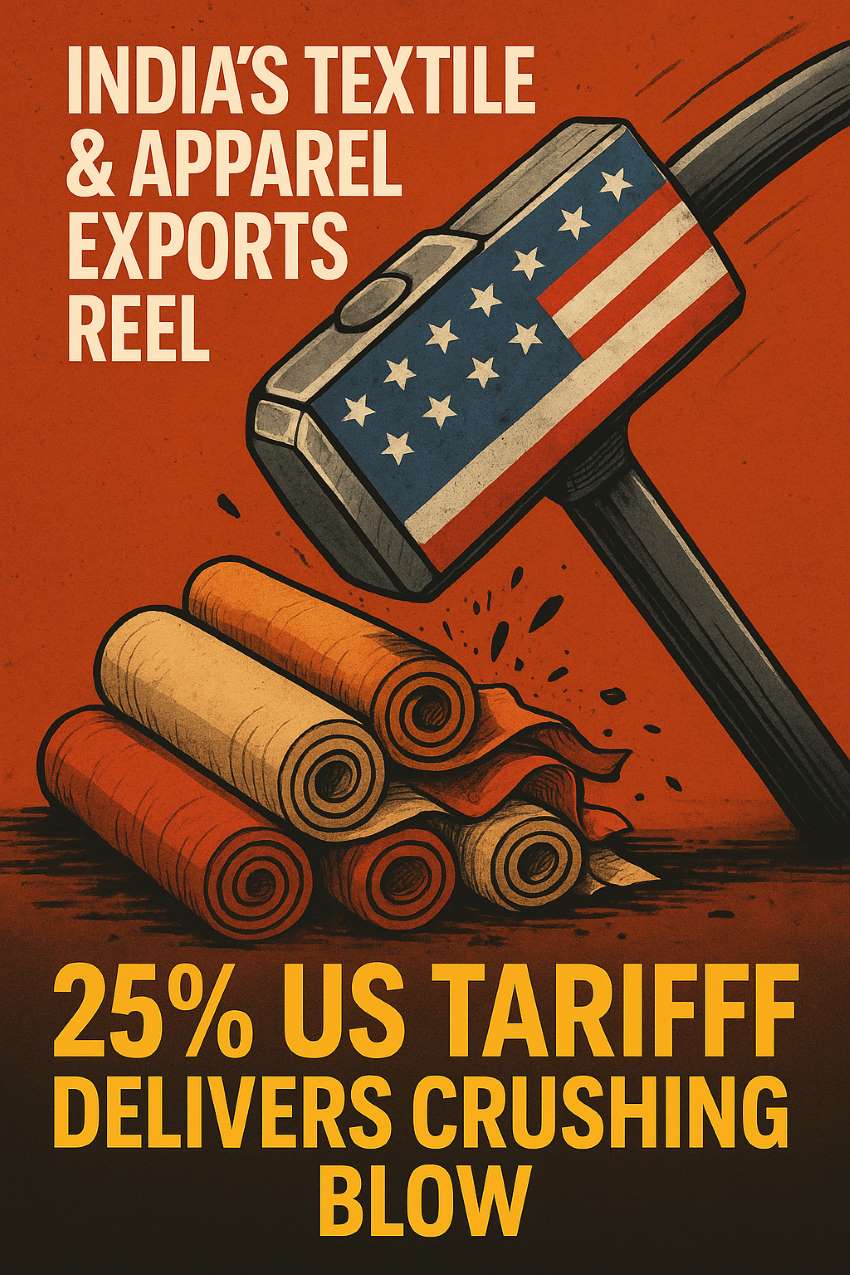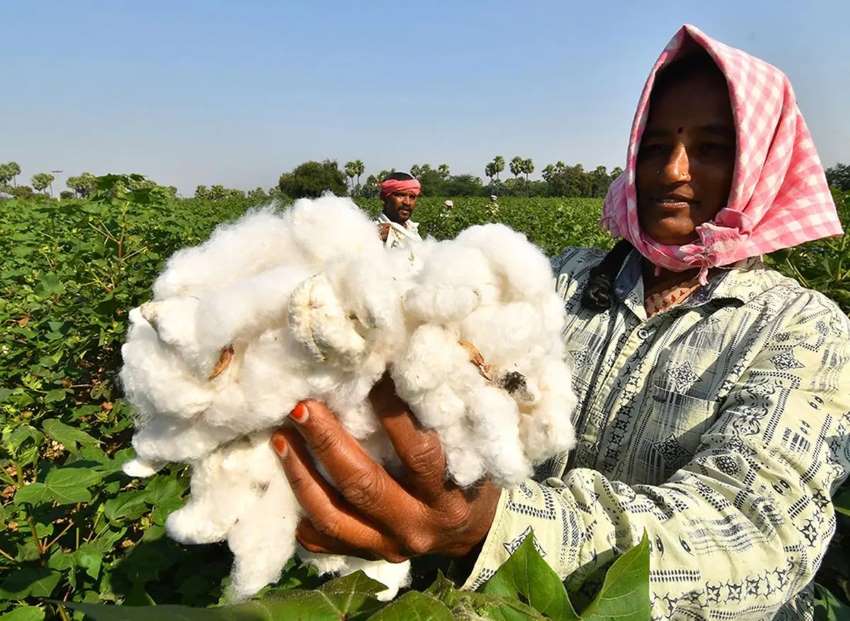
As the global textile industry deals with shifting trade dynamics, environmental mandates, and competitive diversification, one reality remains unchanged: China’s unyielding dominance, particularly in polyester production, remains the axis upon which the industry turns.
Despite intensifying trade wars—most notably the deepening rift between the US and China—and mounting calls for diversified supply chains, China is not only holding its ground but extending its reach.
Polyester, now accounting for approximately 57 per cent of all fiber production at 71 million tons in 2024, is set to continue its reign as the dominant textile fiber. China already commands over 65 per cent of this massive market. This entrenched position means that even as the US-China trade dispute intensifies, reaching a 22-year low in direct textile and apparel imports from China to the US, the globalized nature of the supply chain ensures an unavoidable reliance on Chinese-produced polyester. Products, regardless of their final assembly location, often trace their origins back to China's formidable polyester manufacturing base.
A new report by the International Textile Manufacturers Federation (ITMF) reveals that in 2024, 95 per cent of all new fiber and filament equipment for polyester production was sold to China. This is not merely a statistic—it’s a statement of intent. It underscores Beijing’s long-term industrial strategy, rooted in rigorous five-year plans and bolstered by scale, infrastructure, and control over raw materials.
Polyester, the fabric of global fashion
In 2024, polyester accounted for 57 per cent of global fiber production, amounting to roughly 71 million tons, of which China controlled over 65 per cent. As other fibers grapple with cost volatility or supply disruptions, polyester's synthetic, oil-based reliability continues to make it the textile of choice—from high-performance sportswear to fast fashion. "Even when a T-shirt is sewn in Bangladesh or Mexico, the fiber behind it likely originated in China,” notes a senior analyst at ITMF. “That’s the invisible thread that connects us all to Chinese manufacturing.”
Table: Global polyester market outlook (2024)
|
Metric |
Value |
Source |
|
Total Fiber Production |
~71 million tons |
ITMF |
|
Polyester Share of Total |
~57% |
ITMF |
|
China's Share of Polyester Production |
>65% |
ITMF |
|
Global Market Size (Polyester Fiber) |
USD 129.8 billion |
MarketsandMarkets |
|
New Polyester Equipment Sales to China |
~95% |
ITMF |
What’s fueling this growth? Market projections show the global polyester fiber market growing from $129.8 billion in 2024 to $207.4 billion by 2034. Another estimate, specifically for polyester textile applications, sees the market expanding from $12.85 billion to $15.89 billion by 2030—a testament to polyester’s centrality across fashion, home textiles, automotive fabrics, and beyond. This growth is due to polyester's versatility, cost-effectiveness, and essential properties like durability and wrinkle resistance, making it a staple across various applications.
Exporting dominance China’s textile juggernaut
Even amid geopolitical disruptions, China’s textile and apparel exports climbed to $301.1 billion in 2024, up 2.79 per cent from the previous year. Notably, textiles (largely polyester-based), saw a 5.7 per cent growth outpacing the 0.3 per cent growth in garments and accessory exports.
Table: China's textile & apparel exports (2024)
|
Category |
Export value ($ bn) |
Year-on-year growth |
|
Total T&A Exports |
301.1 |
+2.79% |
|
Textile Products |
141.96 |
+5.7% |
|
Garments & Accessories |
159.14 |
+0.3% |
Source: Fibre2Fashion
This growth occurred even as US imports of Chinese textiles hit a 22-year low. Yet, through indirect trade routes and value-added processes in third countries, China’s polyester yarn and fabrics continue to underpin finished products globally.
Rising Challengers: The new textile cartography
Though China’s hold is firm, global players are manoeuvring to challenge its supremacy. Trade reconfigurations, ESG (Environmental, Social, and Governance) considerations, and foreign investment are shifting toward alternate hubs.
India, warming up the loom
India’s textile and apparel exports rose to $36.3 billion in 2024, a 7.1 per cent increase, driven by an 8.4 per cent rise in apparel exports. As Western retailers seek “China+1” alternatives, India’s legacy in cotton and growing capacity in man-made fibers is helping it inch up the value chain.
Indonesia, investment surge
The Indonesian textile and garment industry grew by 2.64 per cent year-on-year in Q1 2024, with textile and garment exports marginally growing by 0.19 per cent to $2.95 billion in the first three months of 2024 as per Textile Insights. Foreign direct investment in the sector also rose significantly by 70.2 per cent to $194.3 million in January-March 2024. In 2023, Indonesia exported $13.4 billion in textiles globally as per OEC World.
Thailand, quiet but strategic
Thailand’s fabric exports reached $1.08 billion in 2024. While less visible than its neighbors, Thailand is banking on trade agreements and niche strengths to boot its textile and apparel exports.
Recycled polyester takes hold
Even as virgin polyester grows, sustainability narratives are beginning to reshape industry priorities. Recycled polyester, primarily made from discarded PET bottles, is gaining momentum. In 2024, the recycled polyester yarn market was valued at $328 million, projected to hit $1.93 billion by 2033, growing at a CAGR of 16.8 per cent. The broader recycled polyester market stood at $15.52 billion, with projections reaching $26.18 billion by 2030. China and the Asia Pacific region again lead here—producing 65 per cent of recycled polyester yarn globally in 2023.
Table: Global recycled polyester market (2024)
|
Metric |
Value |
|
Recycled Polyester Yarn Market Size |
$328 million |
|
Recycled Polyester Market Size |
$15.52 billion |
|
Asia Pacific Share |
47.78% (Recycled Polyester)/65% (Recycled Polyester Yarn) |
Yet, this progress hides an inconvenient truth: most recycling is bottle-to-fiber, not textile-to-textile. Industry experts caution that unless closed-loop systems become mainstream, polyester’s ecological footprint may persist despite "green" branding.
Stitching the future
Looking ahead, the industry’s evolution hinges on sustained investment. The global textile machinery market—a barometer for future capacity—was worth $29.49 billion in 2023 and is forecasted to grow at 5.5 per cent CAGR through 2030. Asia Pacific again leads, claiming 46.5 per cent of the market in 2023, reflecting capital flow into the region. In geopolitical terms, while a full decoupling from China remains unlikely, the textile map is being redrawn. Countries like India, Vietnam, and Indonesia are no longer just “alternatives”—they’re rising centers of gravity.
Interdependence in a divided world
China’s polyester empire may be built on synthetic fiber, but its foundation is strategic foresight. For now, it’s clear: the global textile supply chain—even when rerouted—inevitably passes through China. But the increasing push for sustainability, combined with geopolitical churn and consumer awareness, is opening doors for a more diversified and circular industry. If the future of fashion is to be greener and more balanced, the threads of innovation, collaboration, and investment must be woven just as tightly as China has done with polyester.











